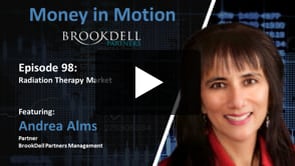Hedge Fund Dashboard:
Top Hedge Fund News, Member Posts, Hedge Fund Daily Indices and more!
Quantitative trading strategy
Submitted 26/02/2021 - 10:55am Silver 8 Capital LLCAhead of the launch of their new quantitative trading strategy, GFM caught up with Manuel Anguita, CFA, Co-Founder of Silver 8 Capital, to get his views on recent developments…
What are the most significant changes you have observed in the market? How do these benefit investors and ultimately the industry as a whole?
We started researching the space in 2014 and began trading in 2015. Back then, the total market cap of cryptoassets was below USD10 billion. At that time, there was sufficient information on the technology, but barely any professional investment analysis. We had to start from scratch, from developing a valuation framework to setting up every aspect of an investment fund, including new trading, legal and operational solutions tailored towards cryptoassets.
Fast-forward to 2021 and the market cap has surpassed USD1.5 trillion! This marks a staggering growth in excess of 150x within a six-year period. The industry is still young, but much more professional, with ample trading solutions, financial instruments, custodians, law firms, research shops, etc. It has never been easier for investors to learn about this technology, evaluate its investment merits, and participate if they so choose.
Where do you think the best opportunities are in the digital assets space? What is driving them?
In our view, there are three distinct investment angles when it comes to cryptoassets:
First, bitcoin has become a macro story: investors are attracted to its economic profile, which has the growth aspect of an asset that is experiencing a process of monetisation. Since the total addressable market of bitcoin as a new form of money is enormous, it does not need to replace any major currency to potentially reward investors with significant returns. In addition, bitcoin has a limited supply that is algorithmically determined (as opposed to discretionary). As such, bitcoin may naturally appreciate if inflation expectations rise. This exposure to growth in its monetary uses, plus an inflationary hedge, provides a very compelling story given the macroeconomic environment that we are facing.
Second, the industry is innovating relentlessly. Entrepreneurs are looking into every possible business application of this new technology, as we can see from the several thousand cryptoassets that exist today. From this perspective, cryptoassets offer a risk profile very similar to that of early-stage venture capital: most of these cryptoassets will fail, but a handful will most likely succeed, rewarding their holders handsomely. Investors looking for this type of high-risk/high-reward proposition will therefore be interested in gaining some exposure to the market.
Third, purely from a trading perspective, these new assets are extremely attractive. Given the volatility, the industry’s growth rate, and increasing availability of financial products (including a growing number of derivatives), there are plenty of arbitrage opportunities for savvy traders. In addition, some of these assets show interesting statistical properties, which makes them particularly suitable for systematic trading strategies.
How can investors best get exposure to these opportunities?
It used to be the case that cryptoassets only traded on small and fragile exchanges. Counterparty risk was extremely high and difficult to mitigate, so access was limited to a small group of specialists.
Nowadays, there are a number of sound and sophisticated venues where investors can purchase and take custody of cryptoassets. Probably the most well-known exchange is Coinbase, whose shares are about to trade publicly on NASDAQ (Silver 8 is an early investor in the company). Investors can also gain exposure to cryptoassets through derivatives, as well as an increasing number of regulated passive investment vehicles.
What role does regulation play in the future of crypto and digital assets within investor portfolios?
For any professional investor, regulatory clarity is extremely positive. Investors in cryptoassets want to make sure that they can operate in a transparent market, where price formation is a consequence of the collective views on the future of this technology and its economic profile. These assets, as any other traded asset, should operate under the principles of a fair, open market.
At the same time, regulation can be used as a moat for the protection of incumbents’ status quo. From this point of view, it is to be expected that powerful players will use their influence to create artificial barriers to entry. An alternative, borderless form of money is a potential threat to the current state monopoly over monetary systems, so some sort of government backlash should not come as a surprise, particularly among the weaker monetary regimes.
As industry participants, we closely follow regulatory developments, support those who promote fair competition and disruptive innovation.
Can you outline the primary challenges and risks investors face in the crypto space and how they can be mitigated?
In our view, the primary challenge is still that of understanding what cryptoassets are all about and then forming an unbiased opinion on them. It is a new, complex, and controversial industry that requires a fair amount of time to grasp.
From our conversations, we are glad to witness how the number of investment professionals who understand the space is growing very rapidly. Investors are attracted to it a number of reasons, such as intellectual curiosity with respect to the technology, the search for uncorrelated returns, or the mitigation of risks stemming from the unprecedented global fiscal and monetary expansions that we are living. For these interested investors, it is now possible to benefit from alternative sources of information on this industry, which was simply not possible just a few years ago.
In addition, there are specific operational challenges to this asset class, in particular with regard to trading and custody. We are encouraged to see how during the last few years large institutions have entered the space to offer these services. For instance, Bank of New York Mellon recently announced the launch of its cryptoasset custody business, with Fidelity (our custody partner) having entered the market in 2018.
In terms of market risk, probably the first that comes to investors’ mind is volatility. Given the level of uncertainty as to cryptoassets’ adoption, the volatility of returns has been significantly higher than that of most other traded assets (sometimes exceeding 100 per cent in annualised terms). On the other hand, investors managing multi-asset portfolios are not only concerned about an asset’s inherent risk, but its correlation to the other assets in their portfolio. In the context of a broader portfolio, cryptoassets have an extremely interesting profile, as they provide returns that have historically been uncorrelated to assets classes whose returns are linked to the business cycle (cryptoassets’ correlation to the S&P 500 typically ranges from -0.3 to +0.3).
Do you think crypto and digital assets are more appealing or appropriate for certain client groups rather than other? Is this changing?
We believe that bitcoin has now reached a point where it should be seriously considered as part of multi-asset portfolios in search for long-term returns, particularly due to the ongoing macroeconomic uncertainty and global expansion in the money supply.
More opportunistic oriented investors may be attracted to the idiosyncratic VC-type risks of smaller cryptoassets, or the trading opportunities that arise from new and rapidly growing markets.
Manuel Anguita
Co-Founder, Silver 8 Capital
Manuel Anguita has a 20+ year career in financial markets. He started his career at Goldman Sachs and Merrill Lynch, shortly before moving into the hedge fund arena. Manuel has held leadership positions at multi-billion dollar funds of varying investment strategies, including global macro, volatility, credit and opportunistic investments. Manuel received an MBA as a Fulbright Scholar from the Stanford Graduate School of Business in 1998, and an MS in Engineering from the Madrid Polytechnical University in 1992. He is a Chartered Financial Analyst (CFA).
Learn more about Building an Institutional Marketplace for Digital Assets at DigitalAssetsLIVE
Author Profile Tags Digital Assets
Today's Hedge Fund Headlines:
Access Over 250K+ Industry Headlines, Posts and Updates
Join AlphaMaven
The Premier Alternative Investment
Research and Due Diligence Platform for Investors
Free Membership for Qualified Investors and Industry Participants
- Easily Customize Content to Match Your Investment Preferences
- Breaking News 24/7/365
- Daily Newsletter & Indices
- Alternative Investment Listings & LeaderBoards
- Industry Research, Due Diligence, Videos, Webinars, Events, Press Releases, Market Commentary, Newsletters, Fact Sheets, Presentations, Investment Mandates, Video PitchBooks & More!
- Company Directory
- Contact Directory
- Member Posts & Publications
- Alpha University Video Series to Expand Investor Knowledge
- AUM Accelerator Program (designed for investment managers)
- Over 450K+ Industry Headlines, Posts and Updates







